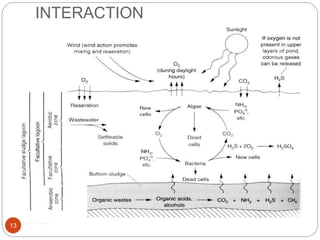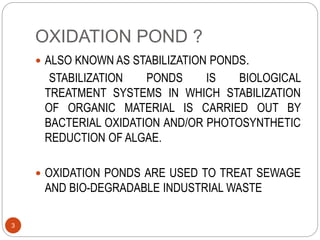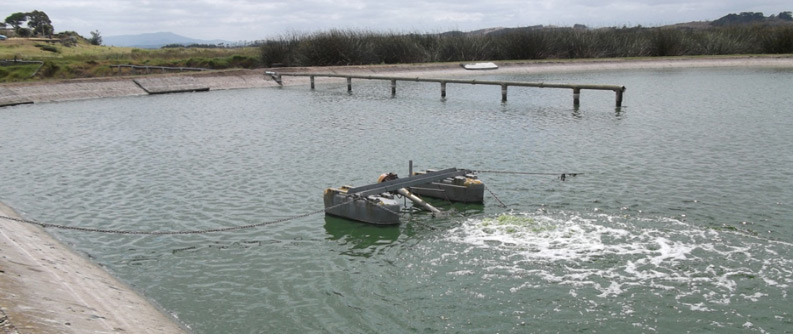An oxidation pond is a man-made, shallow pond that is used for the treatment of wastewater. It is a type of wastewater treatment system that relies on natural processes to break down organic matter and remove pollutants from the water.
The process of oxidation involves the use of microorganisms to consume and break down organic matter in the water. As the microorganisms consume the organic matter, they produce carbon dioxide and water as by-products. This process helps to reduce the amount of organic matter in the water, making it safer to release into the environment.
Oxidation ponds are typically constructed in areas with plenty of sunlight and a moderate climate. The sunlight helps to encourage the growth of algae and other photosynthetic organisms, which can also contribute to the breakdown of organic matter. The moderate climate helps to maintain optimal conditions for the microorganisms to thrive.
There are several types of oxidation ponds, including facultative ponds, maturation ponds, and stabilization ponds. Facultative ponds are designed to allow both aerobic and anaerobic processes to occur, while maturation ponds are designed to allow for the further treatment and stabilization of wastewater. Stabilization ponds are designed to allow for the final treatment of wastewater before it is released into the environment.
One of the main advantages of oxidation ponds is their low cost and simplicity of operation. They do not require the use of expensive mechanical equipment or chemicals, and they can be constructed and operated with relatively low levels of technical expertise.
However, there are also several disadvantages to oxidation ponds. They can be prone to algal blooms and other forms of biological growth, which can lead to aesthetic and environmental problems. They also have a relatively low capacity for treating wastewater, and they may not be able to effectively remove certain types of pollutants.
Despite these limitations, oxidation ponds remain a popular choice for wastewater treatment in many parts of the world. They are particularly useful in developing countries, where resources may be limited and the cost of more complex treatment systems may be prohibitive.
In conclusion, oxidation ponds are a simple and cost-effective method of treating wastewater. While they have their limitations, they can be an effective solution in many situations, particularly in developing countries where resources may be limited.






.jpg/640px-Schematic_of_the_Waste_Stabilization_Pond_(WSP).jpg)